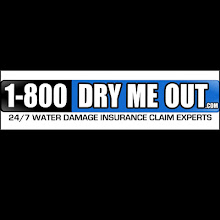
She had gone out of her way to make the event special as she also wanted to impress her in-laws. The house was decorated beautifully and at the center of the living room was her gorgeous Christmas tree. It was almost time for dinner, so she lit the candles on the tree and went to take the turkey out of the oven; however, the oven had stopped working! She quickly took the turkey out of the oven and walked it up to the main house so she could use her in-laws’ oven instead. She placed the turkey into the oven and decided to return to her house to finish up the remainder of the meal. Upon her return, she opened the door in horror. The Christmas tree was in flames! She panicked for a moment but then immediately ran to the kitchen and filled up a bucket of water. A couple buckets later and a lot of dousing, she finally put out the fire. What a relief! Who would have known what would have happened if she hadn’t returned when she did! Fire moves quickly. The whole house could have gone up in flames! And so, her tree was ruined and she was devastated. Luckily, the in-law’s had the couple over to their home and my great-grandparents’ first Christmas together was still wonderful.
Interestingly, it appears my great-grandmother was extremely lucky. In 2008, Canadian platoon chief Paul Whitney was asked to comment on a recent Christmas tree fire and he told the news: “A fire in a Christmas tree — I’m not even sure whether it could safely be fought or even extinguished by a civilian because when they go, they’ll burn very, very rapidly,” he said. “In this case, it spread to curtains and on to other building contents to the point of full involvement within four minutes.”

Even though the custom of using lit candles on Christmas trees is a custom that is no longer followed by most, according to the U.S. Fire Administration, “Christmas trees account for 250 fires annually, resulting in 14 deaths, 26 injuries and more than $13.8 million in property damage.” Based on data collected from 2002 through 2005, Christmas tree fires caused an average of 24 civilian deaths, 27 civilian injuries, and $13.3 million in direct property damage per year. Often the property damage includes neighbor’s homes that were engulfed by the initial fire. How could this be?
According to the National Fire Protection Association, even though the number of Christmas tree fires per year is rather low when it comes to national averages, the fire hazard associated is quite high. Christmas tree fires can be started several ways. Most typically, electrical shorts in Christmas lights are culprits as are the flames of nearby candles. In addition, research has shown that dry trees are the least safe when it comes to fire safety. In controlled studies, researchers showed that a dry tree would be up in flames within 5 seconds of the initial flame. Within 40 seconds, the entire room would catch fire. On the other hand, wet trees were harder to start fire to and would even extinguish themselves.
Another concern for Christmas tree fires is that many people stop watering their trees after Christmas. By New Years Eve, the trees become dangerously dry and are extreme fire hazards. In essence, Christmas trees are not just decorations and symbols of the holidays but also highly combustible items in the middle of your house!
Preventing Christmas tree fires begins even before you bring the tree home. If using a fake tree, your options are fairly easy: purchase a fire retardant tree! However, if opting for a real tree, things get trickier. When purchasing the tree, tap the tree trunk against the ground. If large quantities of needles fall off the tree, the tree has dried out already and should not be purchased. Next, once a healthy tree has been purchased, make a fresh cut on the tree trunk to allow it to soak up water effectively. When situating your tree, keep it away from heat vents, fireplaces and heaters. Keep the tree in a tree stand and give it plenty of fresh water daily – even after Christmas! As long as it is in your house, give it water. One of the most important things a homeowner can do to prevent a Christmas tree fire is to properly maintain a cut Christmas tree and water it often to maintain high moisture content in the needles. There is no such thing as water damage when it comes to Christmas trees. High moisture content will help limit accidental ignition and prevent rapid flame spread. Monitor the tree: if the needles start to fall off too easily, the tree has dried out and is now a serious hazard.
When it comes to Christmas lights for the tree, make sure to use light cords that are in great condition. If any signs of wire damage are found, such as fraying, melting or chew marks, the cord should not be used. Check that all bulbs are sitting in their sockets properly. Limit the use of electrical cords and avoid using electrical socket adapters that create room for additional plugs. If you have pets, place the cords that run along the floor in PVC piping to avoid your pet chewing on the cords. Finally, do not leave lights plugged in when you are not home.
In addition to the aforementioned tips, homeowners should ensure that smoke detectors are working and that all electrical wiring is working properly. Unplug extension cords and tree lights when not in use. Limit the use of candles, don’t use candles near the tree and never leave candles unattended. Finally, fire experts advise that homeowners keep a full size fire extinguisher on each level of the home in case of emergency. With knowledge and caution, homeowners can prevent Christmas tree fires!





